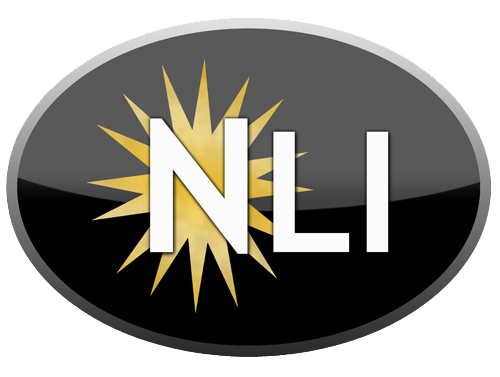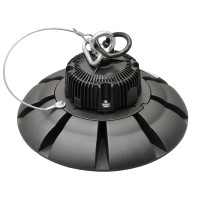High Bay LEDs
Introducing our remarkable LED product line of LED high bay fixtures, specifically designed to cater to the lighting needs of large commercial and industrial spaces. These state-of-the-art fixtures deliver exceptional performance, energy efficiency, and longevity, making them the ideal choice for warehouses, manufacturing plants, gymnasiums, and retail spaces with high ceilings. Our LED high bay fixtures provide superior illumination at heights of 15 to 40+ feet, producing thousands of lumens of bright, uniform light that ensures safe working conditions, enhanced productivity, and reduced operating costs compared to traditional metal halide, high pressure sodium, or fluorescent high bay lighting. The combination of cutting-edge LED technology, industrial-grade construction, and optimized optical design delivers lighting solutions that meet the demanding requirements of industrial and commercial environments.
The energy savings with LED high bay fixtures are substantial and quickly generate strong returns on investment. Traditional metal halide high bay fixtures typically use 250-400 watt lamps with inefficient ballasts, consuming 300-465 watts total system power to deliver 10,000-20,000 lumens. LED high bay fixtures produce equivalent or superior light output using just 100-200 watts—a 60-75% energy reduction. For a warehouse with 50 high bay fixtures operating 12 hours daily, replacing 400W metal halide fixtures with 150W LED equivalents saves 12,500 watts × 12 hours × 365 days = 54,750 kWh annually, worth $5,000-8,000 at typical industrial electricity rates. The payback period is often 18-36 months, after which the savings continue year after year for the LED fixture's 15-20+ year lifespan. Facility managers consistently cite LED high bay retrofits as among the highest-ROI energy efficiency investments available.
Maintenance cost elimination is another compelling advantage. Traditional high bay lighting requires periodic lamp replacements—metal halide lamps typically last 8,000-15,000 hours, necessitating replacement every 12-24 months in facilities with two-shift operations. The lamp replacement itself is just $30-60, but changing bulbs at 20-40 foot heights requires scissor lifts, personnel time, and production disruptions. Total cost per lamp change often reaches $100-200 when accounting for equipment, labor, and downtime. With 50 fixtures, maintenance costs accumulate to $5,000-10,000 annually. LED high bay fixtures with 50,000-100,000 hour L70 lifespans (time to 70% light output) require no maintenance for 10-20+ years, eliminating these recurring costs entirely. The LED solid-state technology has no fragile filaments, arc tubes, or consumable components to fail, providing years of reliable, maintenance-free operation.
Light quality from modern LED high bay fixtures meets or exceeds traditional HID (high intensity discharge) lighting. High CRI (Color Rendering Index) ratings of 80-90+ ensure colors appear natural and true, important for quality control, inventory management, and safety in industrial environments. Unlike metal halide lamps that shift color and decline in output as they age, LED high bays maintain consistent color temperature and stable light output throughout their lifespan (typically less than 10% lumen depreciation over 50,000 hours). The instant-on capability of LED technology is transformative—full brightness immediately when switched on, versus the 5-15 minute warm-up and restrike time required by metal halide fixtures. This instant-on capability enables practical use of occupancy sensors and daylight harvesting controls that further reduce energy consumption.
Thermal management is critical for high-power LED fixtures, and quality high bay designs incorporate substantial aluminum heat sinks with fins to maximize surface area for passive convection cooling. The heat sink must efficiently conduct heat away from the LED modules and dissipate it to the surrounding air to maintain LED junction temperatures within specifications. Effective thermal management ensures the promised lifespan and prevents premature lumen depreciation. Premium LED high bay fixtures use aircraft-grade aluminum heat sinks with optimized fin designs, achieving heat dissipation sufficient for industrial environments with elevated ambient temperatures. Some very high-power designs (200W+) incorporate active cooling with brushless fans, though most industrial applications favor passive cooling for silent, maintenance-free operation.
Optical designs for LED high bay fixtures must deliver appropriate beam patterns for the application. Most fixtures offer beam angles from 60° to 120°, with 90° being common for general warehouse and manufacturing applications providing good overlap between fixtures and uniform floor-to-floor illumination. Narrower beam angles (60-80°) work for very high mounting heights (35-45 feet) where concentrating light downward compensates for increased distance. Wider angles (110-120°) suit lower mounting heights (15-25 feet) or applications requiring wall-to-wall coverage. Advanced fixtures offer optional reflectors or lenses to modify beam patterns, allowing customization for specific spaces. The optical efficiency of quality LED high bays—the percentage of generated lumens actually emitted from the fixture—typically exceeds 90%, ensuring maximum utilization of the LED light output.
Mounting options include traditional pendant/chain suspension, hook mounting, and direct ceiling mount configurations. Most warehouses and industrial spaces use pendant mounting with adjustable cables or chains, allowing precise height adjustment during installation. The lightweight construction of LED high bays (typically 10-25 pounds versus 40-60 pounds for HID high bay fixtures) simplifies installation and reduces structural requirements. Fixtures include strain reliefs and safety cables to prevent accidents if the primary suspension fails. Some LED high bays offer tilting brackets for slope-ceiling installations or to aim light at specific work areas.
Control compatibility expands LED high bay functionality beyond simple on/off operation. Most fixtures offer 0-10V dimming allowing integration with lighting control systems for energy optimization—reduced lighting levels during low-activity periods, daylight harvesting in spaces with skylights, or task tuning for different area requirements. Occupancy sensor integration automatically turns off or dims fixtures in unoccupied zones, particularly valuable in large facilities with variable use patterns (overnight cleaning, weekend operations). Some advanced LED high bays include integrated wireless controls or can communicate via DALI or DMX protocols for sophisticated lighting management. These controls multiply energy savings beyond the already substantial LED efficiency gains.
Common Applications: Warehouses and distribution centers, manufacturing facilities, gymnasiums and recreation centers, big-box retail stores, convention centers, aircraft hangars, automotive repair facilities, anywhere high-ceiling illumination is required
Key Advantages: 60-75% energy savings versus HID high bay lighting, 50,000-100,000 hour L70 lifespan eliminates maintenance, instant-on operation enables sensor controls, consistent color and output throughout life, superior light quality with high CRI, lightweight construction, control compatibility for further energy optimization
Power Ranges: 100-150W (replaces 250-320W HID), 150-200W (replaces 400W HID), 240-320W (replaces 700-1000W HID). Select based on mounting height and light level requirements.
UFO-100WIU-5K Pure-White 5000K
Voltage: 100-277V, Wattage: 100W, Type: LED High/Low Bay Fixture, Color Temp (Kelvin): 5000K..
$75.50

